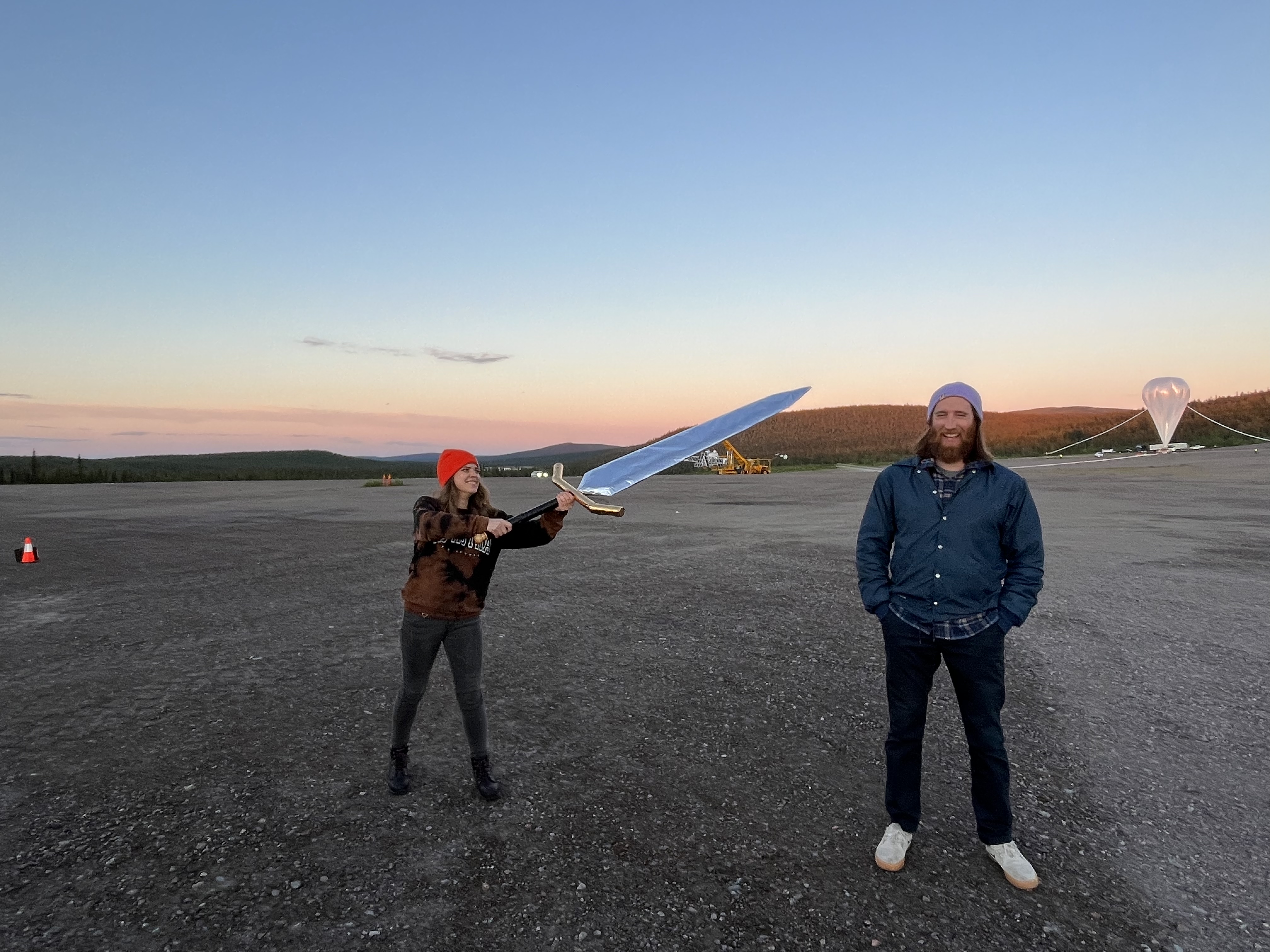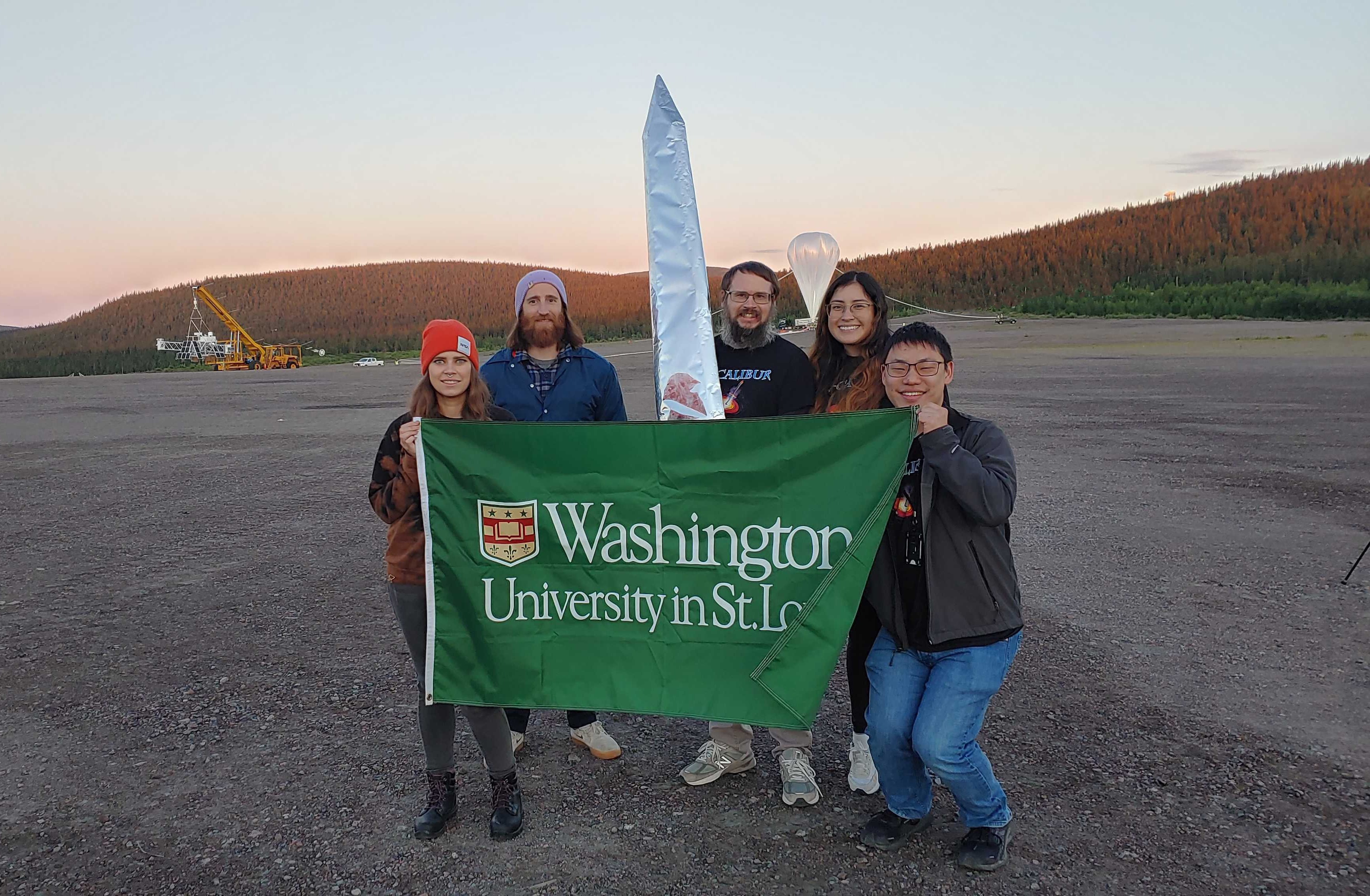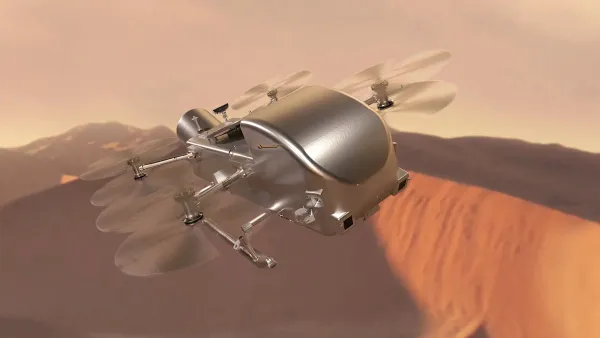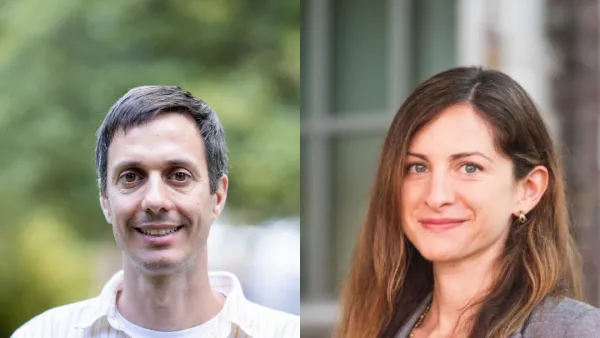XL-Calibur, a balloon-borne X-ray telescope designed to observe black holes and neutron stars, launched on July 12, 2022, from the Esrange Space Center in Kiruna, Sweden, above the Arctic Circle. The successful launch came after six failed attempts and two and half months spent at the remote station. Though the launch itself was near perfect, the XL-Calibur team’s troubles weren’t over after getting the balloon off the ground.
“Overall, the XL-Calibur mission is approximately 10 times more sensitive than its predecessor, X-Calibur, so going in our expectations were very high,” said Henric Krawczynski, chair and professor of physics and faculty fellow in the McDonnell Center for the Space Sciences at Washington University in St. Louis. He is also the principal investigator on XL-Calibur. “This was the first flight of a much longer optical bench (12 meters instead of 8), a much more powerful and massive mirror (3 times more effective area), and an improved polarimeter and shield.”
Simply constructing such an advanced apparatus required substantial dedication and effort, to say nothing of the incredible feats of science and logistics — and luck — that went into the actual launch. Electrical engineer Richard Bose, technicians Dana Braun and Garry Simburger, and research associate professor Brian Rauch, all ballooning veterans in the Department of Physics, worked closely with Krawczynski’s graduate students to get XL-Calibur to the launchpad. With its improved sensitivity, the team expected XL-Calibur to deliver “spectacular physics results.”
Due to a string of flight anomalies, these results didn’t materialize, despite the team’s best efforts. Thirteen hours after launch, and after numerous system checks, various difficulties arose that severely limited how precisely XL-Calibur could point at the sources it was trying to observe.
While the team didn’t see everything they had hoped, they successfully carried out the first flight of a highly advanced, incredibly sensitive instrument. They also gathered useful background data for their ongoing research on black holes and neutron stars. And, they gained something potentially more valuable: experience.
Seeing it through
“Scientific ballooning is not for the faint of heart,” said Andrew West, a graduate student who has been with Krawczynski's research group since his undergraduate days at WashU. “Even in the best of times, balloon campaigns are very stressful. You’re far away from home, you’re isolated, there’s usually little fun to be had and little opportunity to get away from work. It’s tough. But when things went wrong we did not give up. We all stayed professional and committed to doing absolutely everything we could to make the mission a success.”

Lindsey Lisalda, another senior graduate student who has been working on XL-Calibur for the duration of her doctoral studies at WashU, seconded West’s assessment. “There were moments when it would have been easy to give up,” she recalled. “Andrew and I have been working on this project since the beginning, and we went to Sweden to see it through to the end. When something went wrong, there would be that feeling of panic, but every time we were able to shift back to solving the problem at hand. We’d make a plan, give ourselves a quick pep talk, and say, ‘This is what we’re going to do, and it’s going to work.’”
And it did work. Seven days after launching from Esrange, XL-Calibur landed safely in northern Canada. Even with the limitations on what XL-Calibur was able to detect in terms of X-rays from actual black holes and neutron stars, the mission gathered much data that the team is now analyzing to help guide future missions. For example, by examining the rate of photons received per second in combination with the recorded sky coordinates for where XL-Calibur was aimed, the team can determine whether there needs to be some systematic correction in the future to how they point the telescope. More fundamentally, this flight proved that XL-Calibur's improved detector, mirror, truss, and other components work as designed and can be relied upon for future flights.
In spite — or perhaps because — of the challenges they overcame working on the XL-Calibur mission, from construction to launchpad to landing, both Lisalda and West describe themselves as having gotten a real taste for mission management and operations.
“I love the pressure of managing a mission,” West said. “I love the high stakes, and I love being in the field and physically doing science. Particularly in this kind of astrophysics, where it’s mostly intangibles — digital data sets, lots of software development and analysis — to be able to go out into the field and do astrophysics with your hands is the coolest thing ever.”
“Doing tangible work, where you can see it, feel it, and know there’s an end goal, that’s incredibly compelling,” Lisalda added. “You can’t do experimental physics without theory, but it’s great to be able to point to something real and say, ‘I did that.’”
Training for the next mission
In addition to contributing to the construction of the telescope itself, developing software, and working on data analysis, junior scientists on the mission were absorbing management and troubleshooting techniques that will be critical for future projects.
“Watching how Henric, the older graduate students, and the other experienced researchers on the team handled the mission was a truly useful learning experience,” said fourth-year graduate student Ephraim Gau. “For example, Lindsey was very organized and on top of coordinating everything, which was important for keeping so many of the separate moving parts on track.”
“Even when facing each new setback as it came, Henric would consistently adjust our goals, or help adjust our perspectives. For example, he might say something to the extent of, ‘Ok, even if we’re not able to look at the source we wanted to, we can still get a lot of good background data,’” Gau added. “His ability to keep us focused on what we could yet accomplish, even if the situation was not what we imagined it would be, kept us motivated, working, and learning at every stage.”
Under Krawczynski’s leadership, the team was able to pivot as the mission progressed to make the most of every opportunity. All the graduate students working with Krawczynski noted his ability to keep calm and collected in the face of technical difficulties and ranked that as a must-have trait for successful mission management.
“This was the first time I had ever been involved in a campaign this big, so it was kind of like a physicist boot camp,” said Nicole Rodriguez Cavero, a third-year graduate student in Krawczynski’s group and a McDonnell Center Graduate Fellow. “Every day in Sweden we were living and breathing this project and the science that goes into it. It was very intense, but also very cool to have this mentoring going on inside our research group. That hands-on learning and sharing of knowledge is what will ensure this project continues and that there’s consistency in our work.”
XL-Calibur will fly again
With strong models for successful project management, junior scientists from this first flight are poised to move into leadership roles for the next flight. They’ve already proven their ability to perform at a high level for an extended period of time under difficult conditions without losing their focus or, perhaps more importantly, their sense of humor and wonder. The challenge now is waiting for their moment.
“Unfortunately, owing to COVID, there is a large backlog of missions slated to launch from McMurdo Station in Antarctica, which will likely take a few years to catch up,” Krawczynski said. “NASA has not yet determined our position in the flight queue, but we are lacking the push that spectacular results from the Sweden flight would have afforded us.”
Even so, the team remains confident that XL-Calibur will fly again. And this time, they’ll be equipped with extensive, first-hand experience about just how many things can go wrong and how to handle them when they do.
“Henric took a calculated risk when he chose to let Lindsey and I take lead roles in the construction and operation of this experiment, rather than a more experienced scientist,” West said. “And we tried hard to create a culture that encouraged asking questions, that was expansive and inclusive, and that supported passing this experience down to the next group of scientists. I’m grateful to Henric for taking that chance on us and super proud of all we accomplished.”




